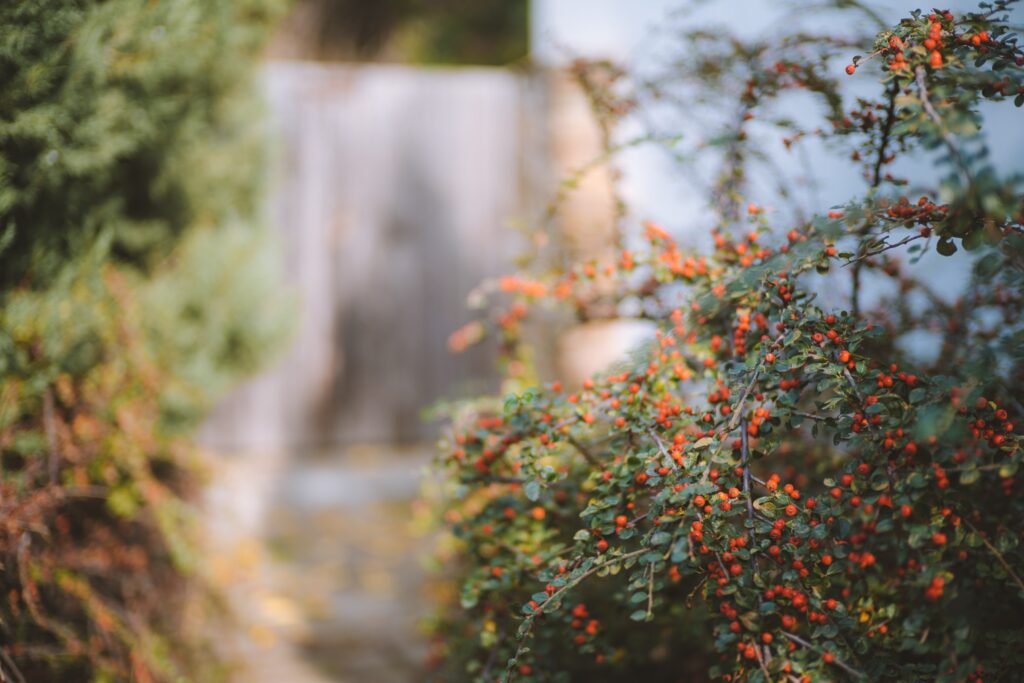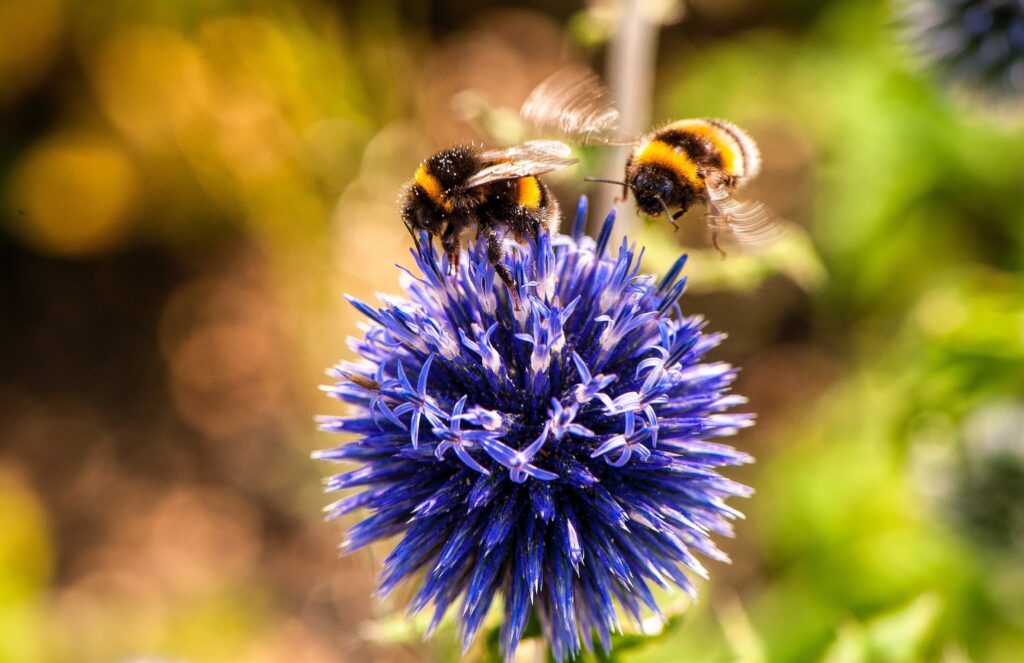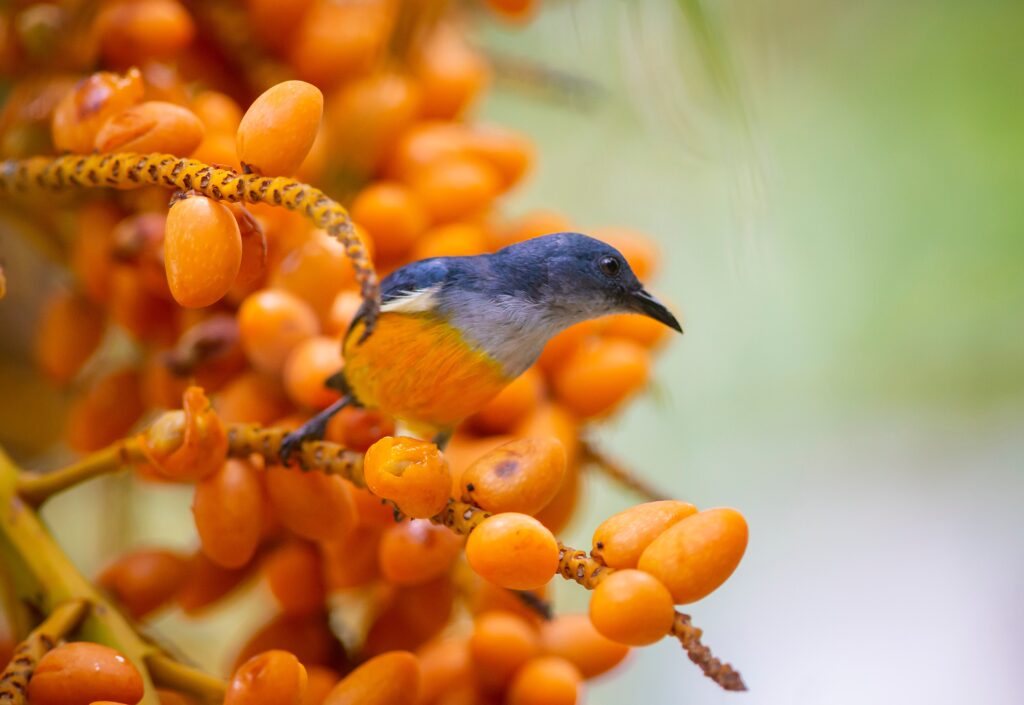Wild fruits have long been discovered by star chefs and gourmets for their excellent aroma. Once from grandmother’s pantry shelf, rosehip, elderberry & co. have become indispensable products for top gastronomy. In particular, fine brandies or liqueurs, for example from sloe, rowan berry or medlar, are sought-after and highly priced delicacies. Wild fruits and wild berries, but also nuts, combine their incomparable taste with a great wealth of vital substances.
But wild fruits not only contain vitamins and minerals, they also contain healing substances. Whether blueberries or sea buckthorn, whether native or foreign species such as chokeberry, many wild fruits served our ancestors as effective medicine and today have a firm place in naturopathy. Unlike commercial products, wild fruits are also convincing because they come from natural or organic cultivation and wild collection.

Aspects in the garden: flowering and autumn coloring
For garden owners but also for agricultural producers, the robustness of hedge plants is an important plus. The shrubs are healthy and easy to care for, provide visual and wind protection as well as habitat for bees and wildlife.
A now large plant selection of wild fruit species allows for a diverse garden layout with changing aspects throughout the year and many colourful berries from May, as with the Elliott´s Blueberry, to November.
Some wild fruit species delight the eye into winter with their autumn colouring in flaming colours. A particularly beautiful orange to red autumn colouring is shown by chokeberry, barberry and rock pear.
Most species are eye-catchers at flowering time due to their abundant flowering. In a wild fruit hedge, the flowering period is very long – from February, as with cornelian cherry, to June, as with elderberry. This long flowering period is pleasing to the eye and reduces the risk of total yield loss, for example due to late frost.

Wild bees and pollinating insects
Birds and bees benefit all year round from the food and shelter provided by flowering or wild fruit shrubs. Bees and other pollinating insects have become the problem children of nature conservation but also of fruit growers. Honey bees in particular suffer from pesticide poisoning and parasite infestation, the Varroa mite, which weakens bee colonies. Cleared landscapes and increasingly uniform agriculture with ever larger areas of one type of crop pose major problems for bees. Neither maize nor wheat nor sugar beet offer nectar for bees. Before and after the rape blossom, there is little for our smallest farm animals to pick up. Large fields can hardly be flown over and flowering field wild herbs are largely absent.
Wild fruit shrubs – whether in wild hedgerows or established crops – are pollinated by insects and provide them with food. The cornelian cherry, for example, but also the cornelian cherry willow are valuable suppliers of nectar and pollen. Therefore, private gardens and a varied agriculture with flowering plants as well as hedges and meadows in between are becoming increasingly important.

Wild fruits – aroma and vital substances
Fruit acids, sugars, minerals and many special scents and flavours make up the special aroma of wild fruits. Their flavour is usually very intense, their colouring power enormous, making them ideal for sorbets and ice creams, in prosecco or as fruit sauce and compote.
Wild fruits are unsurpassed in their vitamin C content. Sea buckthorn, barberry and rosehip contain many times more vitamin C than lemons. Similarly, they contain pectin, which is good for the intestines, and the health-promoting flavonoids and anthocyanins. They are found in high concentrations in all intensely coloured wild fruits. Other vital substances and active ingredients used in natural medicine and pharmaceuticals are also found in blueberries, raspberries and blackberries. There is great potential in wild fruits to provide us with all kinds of substances for health, not all of which are yet known and certainly not researched.

